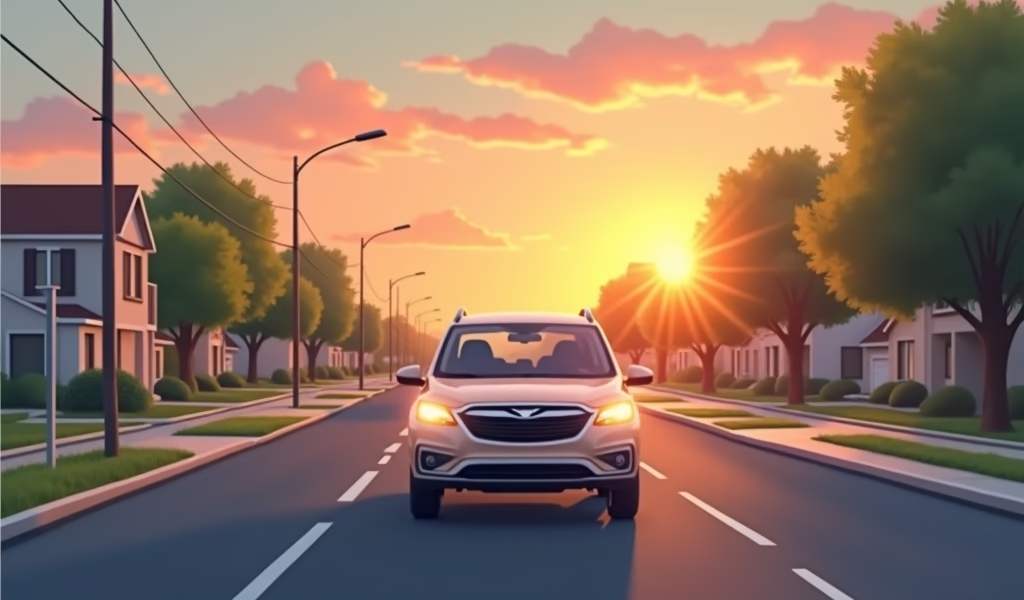Overview
This article provides seven practical strategies to help new drivers reduce their auto insurance costs, including comparing quotes, taking advantage of education and good student discounts, choosing insurance-friendly vehicles, bundling policies, enrolling in usage-based programs, and strategically setting deductibles. New drivers typically face much higher premiums due to their inexperience, but can significantly lower costs through these approaches while maintaining adequate coverage.
Table of Contents
- Understanding Auto Insurance for New Drivers
- Tip 1: Compare Multiple Insurance Quotes
- Tip 2: Take Advantage of Driver Education Discounts
- Tip 3: Choose Your Vehicle Wisely
- Tip 4: Consider Policy Bundling
- Tip 5: Good Student Discounts Can Save You Money
- Tip 6: Explore Usage-Based Insurance Options
- Tip 7: Strategically Increase Your Deductibles
- Conclusion
- Frequently Asked Questions
Understanding Auto Insurance for New Drivers
Getting behind the wheel for the first time is exhilarating, but let’s face it – finding affordable car insurance for new drivers can quickly put the brakes on that excitement. As someone who’s spent years helping folks navigate the sometimes puzzling world of auto insurance, I can tell you that new drivers often face premium sticker shock. Insurance companies view inexperienced drivers as higher risks, which translates to higher costs – but don’t worry, I’ve got your back!
Auto insurance for new drivers doesn’t have to break the bank if you know what you’re doing. Whether you’re a teenager getting your first license, a college graduate buying your first car, or an adult who’s just never needed to drive until now, understanding how insurance works is your first step toward saving money. The good news? There are plenty of ways to reduce those initial high premiums without sacrificing important coverage.
In this guide, I’ll walk you through seven practical tips that can help new drivers navigate the insurance marketplace like pros. We’ll explore everything from education discounts to vehicle selection and policy structures that can dramatically impact your rates. Think of this as your road map to insurance savings – no special tools or mechanical knowledge required!
Tip 1: Compare Multiple Insurance Quotes
I can’t stress this enough: shopping around is absolutely crucial for new drivers. When I was helping my nephew find his first policy, we discovered nearly a $1,200 difference between the highest and lowest quotes for identical coverage! Insurance companies calculate risk differently, and some are simply more friendly to new drivers than others.
Start by gathering at least five quotes from different companies. This might sound tedious, but modern comparison websites have made this process much easier. Just fill out your information once and watch the quotes roll in. Remember though, these comparison sites don’t include every insurer, so it’s worth checking with companies like USAA (if you have military connections) or local insurers directly.
When comparing quotes, make sure you’re looking at apples-to-apples coverage. A policy might seem cheaper until you realize it offers significantly less protection. Pay attention to liability limits, deductibles, and additional coverages. According to a study by the Insurance Information Institute, drivers who compare at least three quotes save an average of $400-500 annually. That’s enough savings to cover several oil changes and routine maintenance for your vehicle!
Tip 2: Take Advantage of Driver Education Discounts

Here’s where many new drivers leave money on the table. Most insurance companies offer substantial discounts for completing recognized driver education courses. These discounts can range from 5% to 15% off your premium, which adds up quickly over time.
Defensive driving courses are particularly valuable. They not only teach vital safety skills but also signal to insurers that you’re serious about being a responsible driver. Many of these courses can be completed online in just a few hours, making them convenient even for busy schedules. The investment is minimal – typically $25-$100 – but the return can be hundreds of dollars in premium savings over several years.
For teen drivers, driver’s education courses are practically essential. Parents, listen up: having your teen complete a comprehensive driver’s ed program could slash their premiums by up to 15%. Some insurers even offer additional discounts if parents and teens take a safety course together. It’s a win-win: your new driver becomes safer on the road, and you both save money.
When shopping for the best car insurance for new drivers, always ask about specific education programs the insurer recognizes. Some companies have partnerships with particular driving schools or online courses, potentially offering even deeper discounts for completing their preferred programs.
Tip 3: Choose Your Vehicle Wisely
Let me share something from the garage: the car you drive can impact your insurance premium as much as your driving history. That sporty coupe might turn heads, but it might also turn your wallet inside out when insurance bills arrive. For new drivers, vehicle selection is especially crucial.
Insurance companies look at several vehicle factors when determining rates. These include repair costs, theft rates, safety ratings, and horsepower. Generally speaking, midsize sedans and small SUVs with excellent safety ratings and modest engines make for the most affordable insurance options for new drivers.
Consider vehicles with advanced safety features. Cars equipped with automatic emergency braking, lane departure warnings, and adaptive headlights can qualify for safety discounts. The Insurance Institute for Highway Safety provides comprehensive safety ratings that many insurers reference when setting premiums.
Before purchasing a vehicle, get insurance quotes for your top contenders. You might be surprised how dramatically rates can differ between similar models. I once worked with a young driver who saved nearly $800 annually by choosing a Toyota Camry over a Dodge Charger – same year, similar price point, vastly different insurance costs.
Remember that older vehicles aren’t always cheaper to insure. While their lower value means comprehensive and collision coverage costs less, they may lack safety features that earn discounts. The sweet spot is often a 3-5 year old vehicle with modern safety technology but depreciated value.
Tip 4: Consider Policy Bundling
One of the simplest ways to reduce insurance costs is through bundling – combining multiple insurance policies with the same company. For new drivers living with parents or guardians, this is low-hanging fruit for savings.
If you’re a young driver on your parents’ policy, have them check for multi-car discounts. Adding your vehicle to their existing policy is almost always cheaper than getting a separate policy, sometimes by 25% or more. Plus, you’ll benefit from their established relationship with the insurer.
For new drivers living independently, consider bundling auto insurance with renter’s insurance. This simple combination typically yields a 5-10% discount on both policies. Even if you’re not renting yet, keep this in mind for future savings.
Some insurers also offer “good payer” discounts for setting up automatic payments or paying your premium in full. These seemingly small discounts of 2-5% add up when combined with other savings opportunities. When I’m helping customers find cheap car insurance for new drivers, bundling is often our first strategy.
Don’t forget to reassess your bundling options annually. As your insurance needs change (perhaps adding home insurance or additional vehicles), new bundling opportunities may become available that weren’t relevant when you first purchased coverage.
Tip 5: Good Student Discounts Can Save You Money

If you’re hitting the books hard, your efforts could pay off beyond just your GPA. Most major insurance companies offer substantial “good student” discounts for drivers who maintain strong academic performance, typically defined as a B average (3.0 GPA) or higher.
These discounts aren’t small change – they often range from 10% to 25% off premiums. The reasoning is sound: statistical data shows that students who perform well academically tend to be more responsible behind the wheel. Insurance is all about risk assessment, and good grades signal lower risk to insurers.
The good student discount usually applies to young drivers up to age 25, making it relevant for high school and college students alike. To qualify, you’ll need to provide proof of your academic achievement – usually a current report card, transcript, or a letter signed by a school administrator.
Don’t assume these discounts apply automatically. You need to request them and provide the necessary documentation. Set calendar reminders to submit updated grade information each semester to ensure the discount continues. Some insurers may require verification as frequently as every six months.
Even if you’re not currently eligible, improving your grades could lead to significant insurance savings. When working with younger drivers, I often point out that raising a GPA from 2.7 to 3.0 could save hundreds of dollars annually on insurance – a pretty good return on investment for studying a bit harder!
Tip 6: Explore Usage-Based Insurance Options
Technology has revolutionized how insurers can assess driving habits, creating new savings opportunities for careful drivers regardless of their experience level. Usage-based insurance programs (sometimes called telematics) use devices or smartphone apps to monitor your actual driving behavior rather than relying solely on demographic predictions.
For new drivers who practice safe habits, these programs can be golden. Instead of being lumped in with all other inexperienced drivers, you get rated on your personal driving patterns. The tracking typically monitors factors like acceleration, braking, cornering, speed, and time of day you drive.
The potential savings are significant – some companies offer initial discounts of 5-10% just for enrolling, with the possibility of saving up to 30-40% based on demonstrated safe driving. For new drivers facing high premiums, this can translate to hundreds of dollars annually.
Companies like Progressive (Snapshot), Allstate (Drivewise), and State Farm (Drive Safe & Save) all offer versions of these programs. Each has slightly different rules about what they track and how discounts are calculated, so it’s worth comparing options.
Privacy concerns? That’s understandable. Most programs allow you to review your own data, and many have evolved to track only specific driving behaviors rather than continuous location data. Some insurers even offer “trial periods” where your rates won’t increase based on the data – you can only receive discounts.
For parents of teen drivers, these programs offer an added benefit: many provide feedback and driving reports that can help young drivers improve their skills. It’s like having a patient driving instructor providing gentle feedback after every trip.
Tip 7: Strategically Increase Your Deductibles
Your deductible – the amount you pay out-of-pocket before insurance kicks in after a claim – has an inverse relationship with your premium. Higher deductibles mean lower premiums, which can be particularly helpful for new drivers facing steep rates.
However, this requires careful consideration. While raising your collision deductible from $500 to $1,000 might save you 10-15% on that coverage, you need to ensure you could actually afford to pay that higher amount if you needed to make a claim.
Here’s a balanced approach I recommend: Calculate the annual savings from increasing your deductible. If it would take less than 2-3 years of those savings to cover the increased deductible amount, it might be worth considering. For example, if raising your deductible saves you $200 annually but increases your out-of-pocket cost by $500 in case of an accident, you’d break even after 2.5 years without a claim.
For new drivers with older vehicles, this strategy can make even more sense. If your car is worth $5,000, carrying a $250 deductible might not be cost-effective compared to a $1,000 deductible with its accompanying premium reduction.
Consider creating a simple “deductible fund” – set aside the difference between your current and potential deductible in a savings account. Once you’ve saved the full difference, you can increase your deductible with confidence, knowing you’ve already set aside the additional funds you might need.
Remember to reassess this strategy as your financial situation and vehicle value change. What makes sense with your first car might not be appropriate as you upgrade to more valuable vehicles later in your driving career.
Conclusion
Navigating auto insurance for new drivers doesn’t have to be a financial pothole on your road to driving independence. By implementing these seven strategies – comparing quotes diligently, leveraging education discounts, choosing insurance-friendly vehicles, bundling policies, maintaining good grades, participating in usage-based programs, and strategically setting deductibles – you can significantly reduce your premiums while maintaining solid coverage.
Remember that insurance is a long game. As you gain experience and maintain a clean driving record, your rates will naturally decrease over time. Those first few years might feel expensive, but by building good habits now, you’re setting yourself up for insurance savings throughout your driving lifetime.
Don’t be afraid to ask questions and revisit your coverage regularly. Insurance needs evolve as your life changes, and what works for you as a brand-new driver might not be optimal a few years down the road. The most important thing is making sure you’re adequately protected while not paying more than necessary.
Safe driving isn’t just about avoiding accidents – it’s about building a record that proves to insurers you’re a lower risk than your demographic might suggest. Every claim-free year is a step toward lower premiums and better coverage options. So buckle up, drive carefully, and put these insurance savings tips to work!
Frequently Asked Questions
How much does auto insurance typically cost for a new driver?
New drivers typically pay $2,000-$5,000 annually for full coverage, roughly 2-3 times more than experienced drivers. Actual costs vary significantly based on location, vehicle, and individual factors like age and credit score.
Should new drivers get full coverage or minimum liability insurance?
New drivers should strongly consider full coverage despite higher costs, as inexperience increases accident risk. Minimum liability often leaves gaps that could lead to significant out-of-pocket expenses after an accident.
How long are drivers considered “new” by insurance companies?
Insurance companies typically consider drivers “new” for 3-5 years after obtaining their license. Premium decreases usually occur gradually throughout this period, assuming a clean driving record is maintained.
Can new drivers join their parents’ insurance policy to save money?
Yes, new drivers can typically save 50-60% by joining their parents’ policy rather than purchasing their own. This option is available as long as the new driver lives at the same address as the policyholder.
Do new drivers need to report their learner’s permit to insurance companies?
Most insurance companies don’t require reporting drivers with learner’s permits, as they’re covered under the supervising driver’s policy. Always verify this with your specific insurer, as policies vary between companies.

